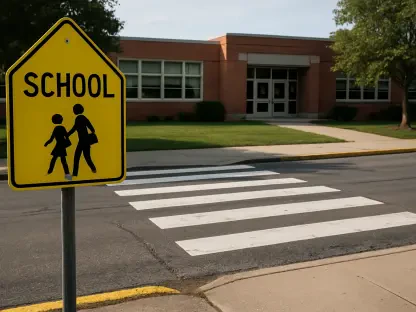In an era where higher education costs continue to soar, community colleges have emerged as a vital lifeline for countless students seeking affordable and accessible pathways to academic and career success, providing a practical alternative to traditional four-year universities. These institutions often offer lower tuition rates and flexible programs tailored to diverse learner needs. However, not all community colleges deliver the same level of quality, as highlighted by a recent comprehensive study conducted by WalletHub. This analysis evaluated over 650 community colleges across the United States, using a detailed set of 18 criteria to determine which schools stand out as exemplars of excellence and which fall short in meeting student expectations. Metrics such as in-state tuition costs, student-faculty ratios, graduation rates, and post-graduation career outcomes were meticulously assessed to provide a clear picture of institutional performance. This ranking serves as an invaluable guide for prospective students aiming to make informed decisions about their educational investments, shedding light on the disparities in quality and opportunity that exist within this critical sector of higher education.
Unveiling the Top Performers
When it comes to identifying the cream of the crop among community colleges, the data points to several standout institutions that consistently excel across multiple dimensions. State Technical College of Missouri emerges as the leading institution, celebrated for its remarkable retention rate of 90% from the first to the second year, alongside a nation-leading graduation rate of 79%. Beyond these impressive academic statistics, the college offers substantial financial support, averaging $9,223 in aid per student, and unique benefits like credit for life experiences and dedicated employment services. These factors combine to create an environment where students are not only retained but also positioned for long-term success after completing their programs. The emphasis on both academic achievement and practical support underscores why this college tops the rankings, serving as a model for others in the field.
Following closely behind, Manhattan Area Technical College in Kansas secures a well-deserved second place, largely due to its strong focus on preparing students for financial stability after graduation. A striking 77% of its graduates earn more than the average high school graduate, with a median salary nearing $52,000, reflecting the institution’s commitment to career readiness. Additionally, it boasts the lowest student loan default rate among the studied schools, a testament to its effective financial guidance and support systems. High graduation and retention rates further solidify its standing, demonstrating a balanced approach to education that prioritizes both academic success and economic outcomes. This combination of factors makes it a compelling choice for students seeking a robust return on their educational investment in a supportive learning environment.
Highlighting the Underperformers
On the opposite end of the spectrum, the rankings reveal a sobering reality for some community colleges that struggle to meet the benchmarks of quality education and student support. Institutions such as Little Big Horn College, Chief Dull Knife College, and Mississippi Delta Community College find themselves among the lowest-ranked schools in the nation. While specific reasons for their poor performance are not fully detailed in the study, their placement suggests significant shortcomings in critical areas like affordability, educational outcomes, or career preparation. This stark contrast to the top performers serves as a reminder of the wide variability in the community college landscape, urging prospective students to delve deeper into institutional data before making enrollment decisions that could impact their future.
The implications of these lower rankings are far-reaching, as they highlight systemic challenges that may hinder student success at underperforming colleges. Factors such as limited financial aid, inadequate faculty resources, or poor post-graduation employment support could contribute to these outcomes, creating barriers for students striving to improve their prospects through education. For those considering these institutions, it becomes imperative to weigh the potential risks against any local advantages, such as proximity or specific program offerings. This segment of the rankings acts as a cautionary note, emphasizing the importance of thorough research and careful consideration to avoid educational paths that may not deliver the desired results or value for the investment made.
Key Trends and Insights
A deeper look into the data reveals compelling trends that distinguish high-performing community colleges from their less successful counterparts. One prominent pattern is the strong correlation between robust institutional support and positive student outcomes. Top-ranked schools often provide extensive resources like employment services, generous financial aid packages, and high levels of faculty engagement, all of which contribute to better graduation rates and enhanced earning potential after graduation. This suggests that a commitment to student success beyond the classroom is a critical factor in determining the overall quality of an educational institution, offering valuable lessons for colleges aiming to improve their standings.
Another significant insight from the study is the financial advantage that community colleges generally offer compared to four-year universities. With lower tuition costs, these institutions remain an attractive option for cost-conscious students who still seek a quality education. However, the variability in performance across schools underscores that affordability alone is not a guarantee of value. Students must consider how well a college aligns with their academic and career goals, factoring in metrics like graduation rates and job placement success. As the landscape of higher education continues to evolve, these findings provide a roadmap for prospective students to navigate their options strategically, ensuring they select a college that maximizes both educational and economic benefits.
Reflecting on the Path Forward
Looking back at the comprehensive evaluation of community colleges, it becomes evident that the disparities in quality have profound implications for students’ futures. The standout performances of schools like State Technical College of Missouri and Manhattan Area Technical College demonstrate what is achievable with a strong focus on retention, graduation, and career preparation. Meanwhile, the struggles of lower-ranked institutions serve as a stark warning about the potential pitfalls in the system.
Moving forward, the insights gleaned from this study point to actionable steps for improvement. Colleges at the lower end of the spectrum could benefit from adopting best practices from top performers, such as bolstering financial aid and enhancing career services. For students, the path ahead involves leveraging these rankings to make informed choices, prioritizing institutions with proven track records of success. As the educational landscape continues to shift, this data offers a foundation for fostering better outcomes, ensuring that community colleges remain a viable and valuable stepping stone to brighter futures.









